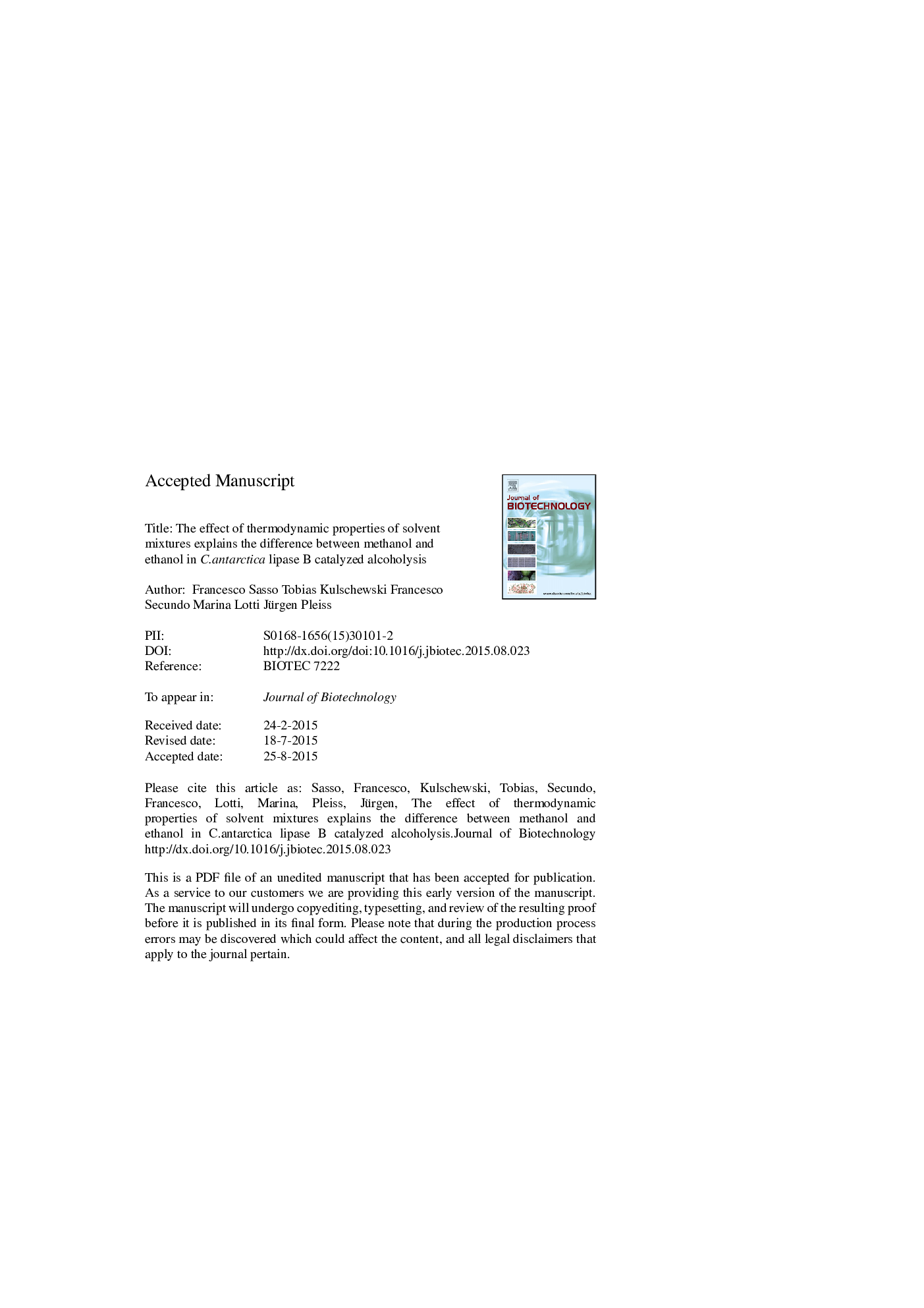| Article ID | Journal | Published Year | Pages | File Type |
|---|---|---|---|---|
| 6490850 | Journal of Biotechnology | 2015 | 26 Pages |
Abstract
Kinetic modelling, molecular modelling, and experimental determination of the initial reaction velocity of lipase-catalyzed alcoholysis were combined to study the effect of the alcohol substrate to catalytic activity. The model system consisted of methanol or ethanol at varying concentrations, vinyl acetate as ester substrate 15.2% (v/v), toluene as organic solvent, water at a controlled thermodynamic activity of 0.09, and C. antarctica lipase B as enzyme. For both alcohol substrates, the initial reaction velocity increased sharply at low concentrations and reached a maximum at 0.7% (v/v) for methanol and 2% (v/v) for ethanol. For higher concentrations, the reaction rate decreased to a level of 74% and 60% of the peak value, respectively, due to substrate inhibition. The concentration dependency was described by a kinetic model, including a ping-pong bi-bi mechanism and competitive inhibition by the alcohol, and confirmed previous observations that methanol is more efficiently inhibiting the enzyme than ethanol. However, if the initial reaction velocity was expressed in terms of thermodynamic activity of the two alcohol substrates, the maximum of initial reaction velocity was similar for methanol (aMeOHmax = 0.19) and ethanol (aEtOHmax = 0.21). This was confirmed by molecular modelling which resulted in similar KM (0.22 and 0.19) and Ki values (0.44 and 0.49) for methanol and ethanol, respectively, if expressed in thermodynamic activities. Thus, the experimentally observed difference between methanol and ethanol is not due to differences in interaction with the enzyme but is a consequence of the thermodynamics of the substrate-solvent mixture. For low concentrations in toluene, the activity coefficient of methanol is 40% higher than the activity coefficient of ethanol (γMeOH = 8.5, γEtOH = 6.1).
Related Topics
Physical Sciences and Engineering
Chemical Engineering
Bioengineering
Authors
Francesco Sasso, Tobias Kulschewski, Francesco Secundo, Marina Lotti, Jürgen Pleiss,
